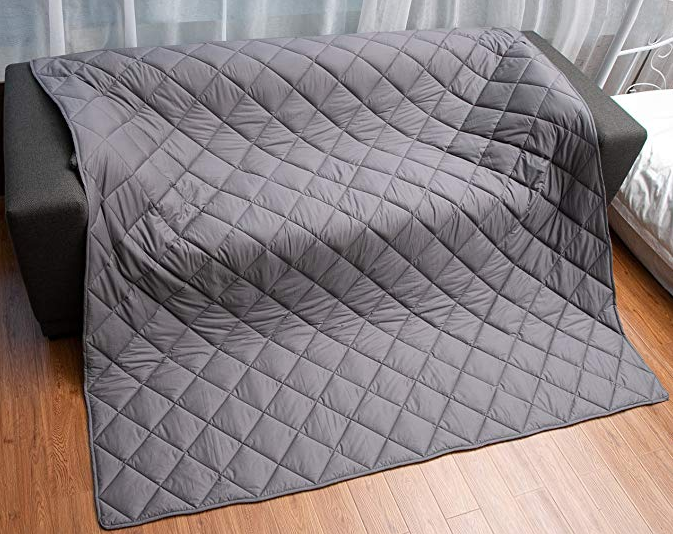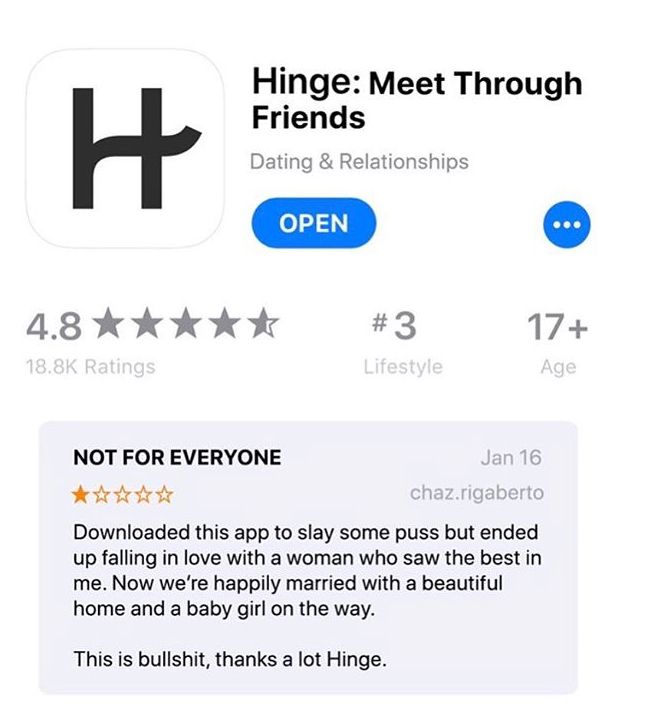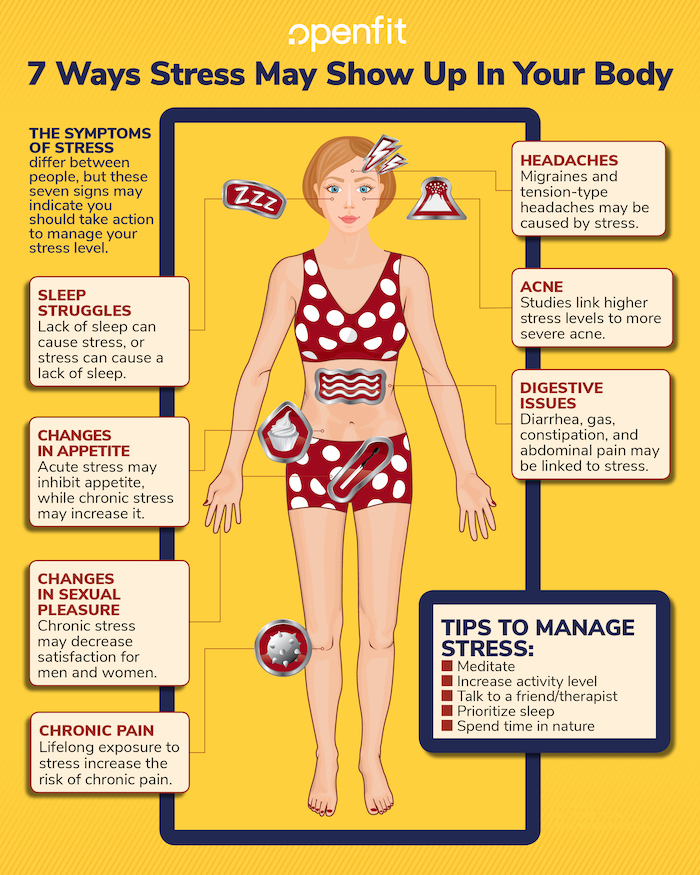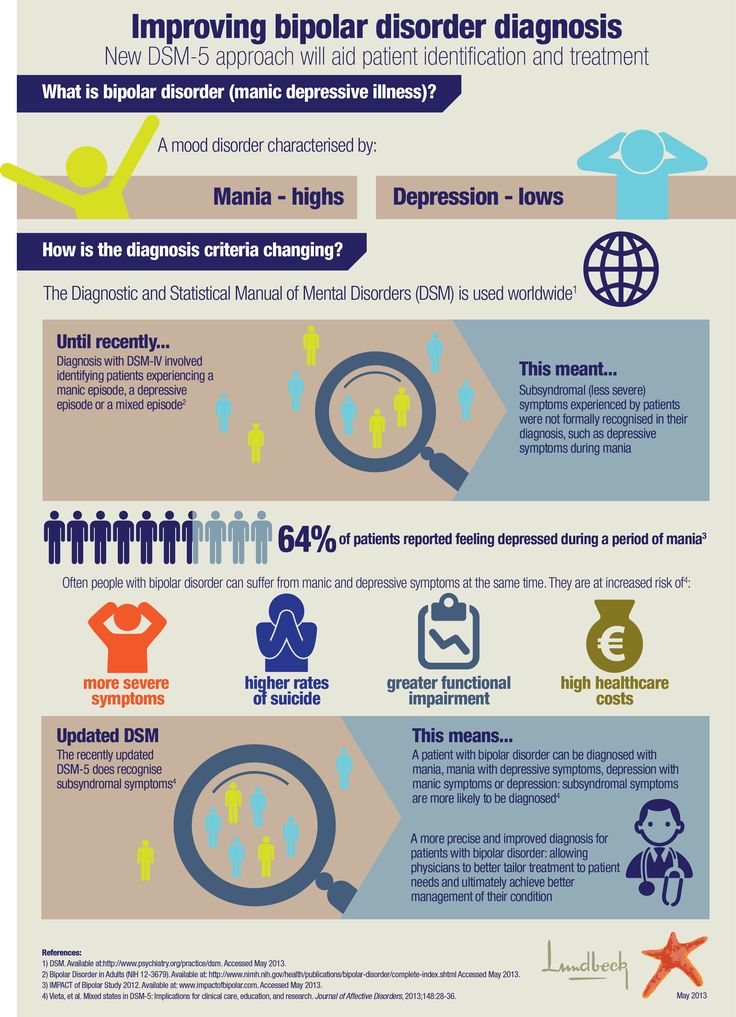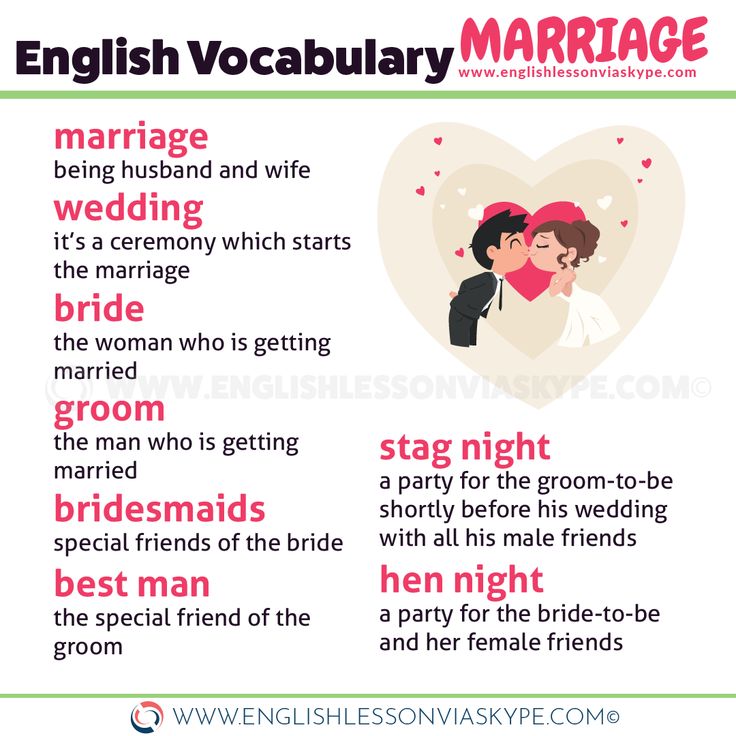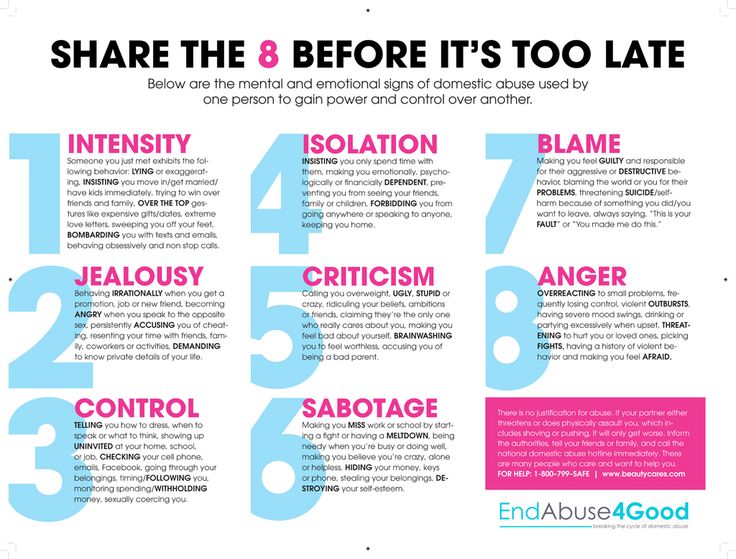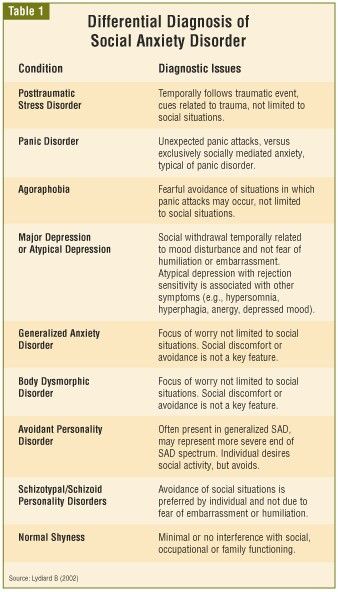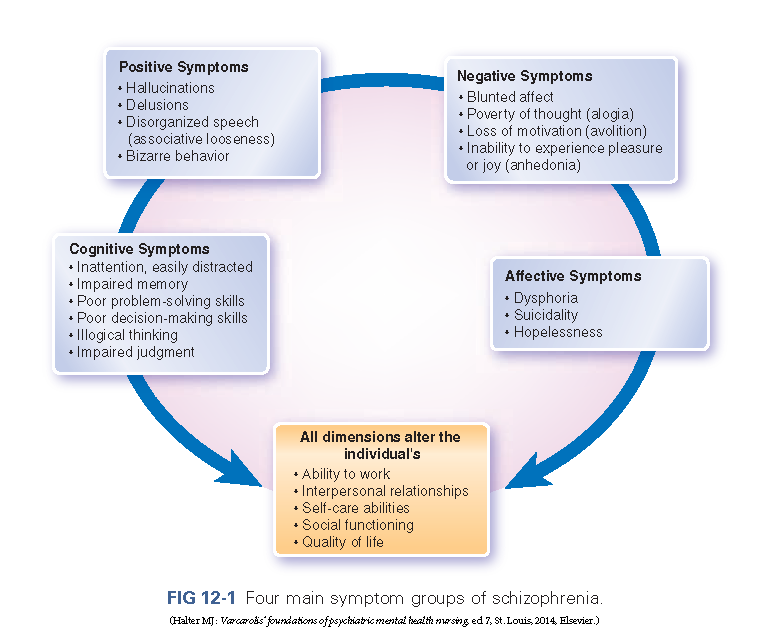Child bipolar disorder test
Bipolar Disorder Symptoms Test for Children
For many years, bipolar disorder was considered an adult illness. But in the 1990s, researchers started to accept the idea that bipolar disorder could manifest in childhood, in a rare form known as pediatric bipolar disorder. According to the National Institute of Mental Health, this form of bipolar disorder is often more severe than the adult-onset variety, and “young people with the illness appear to have more frequent mood switches, are sick more often, and have more mixed episodes.”
Early-onset bipolar disorder is rare, affecting just 0.5 percent of children in the U.S. It can begin as young as 6, and many children with the condition are initially misdiagnosed with ADHD, ODD, or depression — depending on how their symptoms most often present.
Could your child’s extreme changes in mood, temperamental outbursts, and vacillating energy levels be a sign of bipolar disorder? Take this self-test and then take the results to a mental health professional for evaluation.
Adapted from the Child Bipolar Questionnaire (CBQ) designed to screen for the possibility of bipolar spectrum disorders in juveniles. If you answer Yes to a significant number of these questions, consult a licensed mental health practitioner. An accurate diagnosis can only be made through clinical evaluation. Screener for personal use only.
Does your child expect the worst at every turn? Does he panic over small, seemingly insignificant events — like a minor scrape or a crime-related news story?
Very Often
Often
Sometimes
Rarely
Never
Does your child seek out gory films and violent, bloody games?
Very Often
Often
Sometimes
Rarely
Never
Does it seem like your child has given up sleeping altogether — but often doesn’t seem tired the day after a sleepless night?
Very Often
Often
Sometimes
Rarely
Never
Does your child’s brain seem powered by a motor? Does she talk a mile a minute, or says she can’t seem to slow down her thoughts?
Very Often
Often
Sometimes
Rarely
Never
Does your child inconsistently have periods where he has an unfocused, limitless energy that feels out of control, even to him?
Always
Often
Sometimes
Rarely
Never
When you try to set limits on your child — asking him to shut off his video game and join you at the dinner table — does he react in an extreme or violent way?
Very Often
Often
Sometimes
Rarely
Never
Is your child sometimes precocious — charming adults with his intelligent and mature speaking style — and then at other times does he regress to baby-like, primitive behaviors, like crawling up in a fetal position when stressed or engaging in baby talk?
Very Often
Often
Sometimes
Rarely
Never
All of a sudden, is your child convinced she can be a famous singer, president of the United States, an international spy, and a millionaire — all at once?
Very Often
Often
Sometimes
Rarely
Never
Does your child suddenly reject taking part in her favorite activities?
Very Often
Often
Sometimes
Rarely
Never
Does your child’s mood change from happy to sad instantaneously — almost like flicking a light switch?
Very Often
Often
Sometimes
Rarely
Never
Is your child much more curious about sex than other children her age? Does she bring up sex inappropriately in conversation, or has she engaged in inappropriate or risky sexual behaviors?
Very Often
Often
Sometimes
Rarely
Never
Does your child have long, explosive rage attacks — sometimes complete with foul language that’s inappropriate for his age?
Very Often
Often
Sometimes
Rarely
Never
When your child gets in trouble at school or at home, does she blame others for causing the mistake?
Very Often
Often
Sometimes
Rarely
Never
Does your child engage in dangerous activities — like jumping out of trees or rollerblading while hanging on to the back of a car — and later say that he knew it could be dangerous, for others but that he felt immune to that danger? Does he report that he may even welcome any injury?
Very Often
Often
Sometimes
Rarely
Never
Does your child masterfully lie to either avoid consequences or manipulate a situation?
Very Often
Often
Sometimes
Rarely
Never
(Optional) Would you like to receive your bipolar symptom test results — plus more helpful resources — via email from ADDitude?
Subscribe me to your newsletter!
Can’t see the self-test questions above? Click here to open this test in a new window.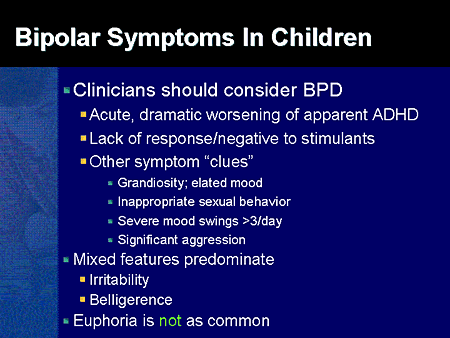
Bipolar Disorder in Children: Next Steps
1. Take This Test: Full ADHD Symptoms Test for Children
2. Take This Test: Oppositional Defiant Disorder in Children
3. Take This Test: General Anxiety Disorder for Children
4. Download: Is It Bipolar or ADHD?
5. Read: What Bipolar Disorder Looks Like in Children
6. Explore: Where ADHD and Bipolar Disorder Overlap
7.Find: Specialists or Clinics Near You
Previous Article Next Article
Does my child have bipolar disorder?
It’s hard enough to help a child through the normal ups and downs of adolescence. If your child also has bipolar disorder, it can be even more overwhelming—but the first step is to figure out whether your child has bipolar disorder in the first place.
Bipolar disorder in children
Bipolar disorder is a mental health condition where a person experiences episodes of high and low moods, called mania and depression.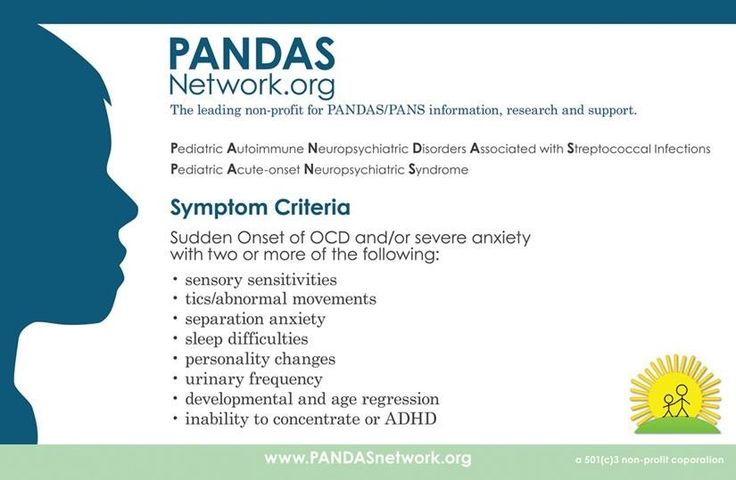 When someone is manic, they might have lots of energy, feel unstoppable, and act impulsively. When they’re depressed, they might feel worthless or empty, have trouble getting out of bed, and have thoughts about death or suicide.
When someone is manic, they might have lots of energy, feel unstoppable, and act impulsively. When they’re depressed, they might feel worthless or empty, have trouble getting out of bed, and have thoughts about death or suicide.
In adults, episodes of mania and depression usually last for several weeks or even months. In between, the person will feel relatively “normal.”
With children, it’s a bit different. Children with bipolar disorder often cycle between mania and depression more rapidly—sometimes several times within a single day. Children also commonly experience mixed episodes: times when they experience symptoms of mania and depression at the same time.
Bipolar disorder in children also commonly gets confused with other conditions, such as conduct disorder, anxiety, and depression. But the most common mix-up is between bipolar disorder and ADHD. (It’s also possible for a child to have more than one of these conditions at the same time.)
Bipolar or ADHD?
Bipolar disorder and attention-deficit/hyperactivity disorder (ADHD) share some overlapping symptoms:
- Getting distracted easily.
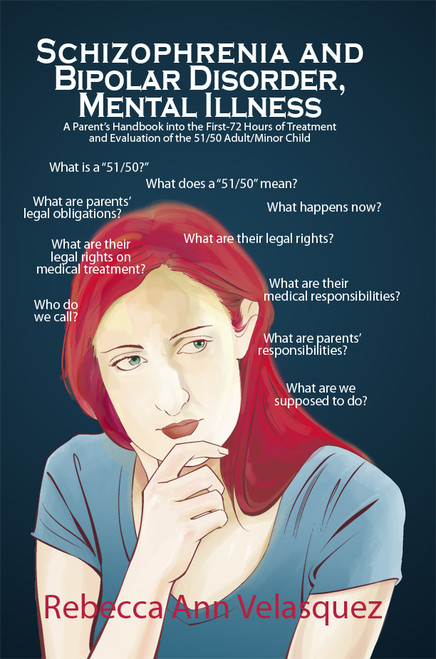
- Having a short attention span.
- Feeling irritable.
- Having trouble sitting still.
- Speaking so quickly it’s hard to follow what they’re saying.
One of the keys to distinguishing between the two is to look for symptoms that are common only in bipolar disorder and not in ADHD:
- Feeling extremely excited or happy.
- Racing thoughts.
- Self-harm or thoughts of suicide.
- Psychotic symptoms, like seeing or hearing things that aren’t there.
- Only sleeping a few hours a night, and not feeling tired the next day. (Kids without bipolar disorder might have trouble sleeping, but they’ll usually at least try to sleep more. And they’ll feel tired the next day.)
- Grandiosity: acting as though the rules don’t apply to them, or acting like an authority figure to other children or even teachers.
- Hypersexuality: being more interested in sex than most children their age—and as a way of seeking pleasure, not just out of curiosity.

- Intense goal-oriented activity: drawing intricate pictures, writing long stories, building complicated structures with toys.
Getting a diagnosis
You can look for warning signs of bipolar disorder in your child, but you can’t diagnose them yourself. If you think your child may have bipolar disorder, it’s important to get them to a doctor or a counselor who can evaluate them. The person doing the evaluation will talk to both you and the child—parents and children usually give very different descriptions of the symptoms, and both of those descriptions are helpful. Whoever diagnoses your child will also be able to help you find treatment options.
You might find it helpful to take our online bipolar test on behalf of your child, or to have your child take it themselves. Only a mental health professional can diagnose bipolar disorder, but it can be a good starting point for talking to your child about what they’re experiencing. You can also print off the results and take them with you when you do speak to a professional.
Show References
- National Institute of Mental Health (NIMH). (2015). Bipolar Disorder in Children and Teens. Retrieved from
https://www.nimh.nih.gov/health/publications/bipolar-disorder-in-children-and-teens/index.shtml - Singh, T. (2008). Pediatric Bipolar Disorder: Diagnostic Challenges in Identifying Symptoms and Course of Illness. Psychiatry, 5(6), pp. 34-42. Retrieved from https://www.ncbi.nlm.nih.gov/pmc/articles/PMC2695748/
Test for Bipolar Affective Disorder
This test is recommended for people who experience systematic episodes of unexplained mood changes in their lives, both positive and negative.
Bipolar affective disorder (abbr. BAD , formerly manic-depressive psychosis or MDP) is a mental illness that manifests itself in the form of an alternation of mood background: from excellent / super-excellent (hypomania / mania phase) to reduced (depressive phase). The duration and frequency of phase alternation can vary from daily fluctuations to fluctuations throughout the year.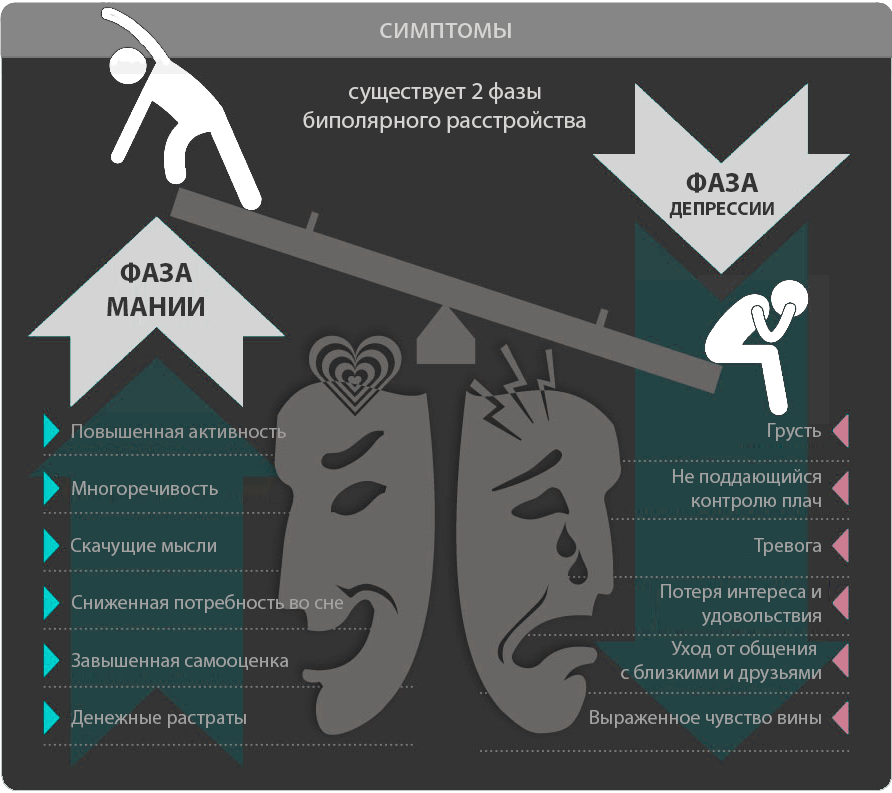
This test is a Russian version for detecting hypomanic conditions, the original name is HCL-32 (Hypomania Checklist) .
Typically used to detect BAD type II among patients with a current diagnosis of RDD (recurrent depressive disorder).
I remind you: this disease is unambiguously related to pathology, only a psychiatrist or psychotherapist can deal with diagnosis and treatment.
Instructions for filling
Try to recall a period of "elevated" state, which at the same time was not caused by drugs or alcohol and lasted more than two days (4-6 days in a row). How did you feel then?
Please answer the questions about how you felt while on the rise no matter how you feel today.
Lifting I:
| 1. Sleep less. Yes |
| 2. Yes |
| 3. More self-confident. Yes |
| 4. I get more pleasure from work. Yes |
| 5. Become more sociable (more often on the phone, more often in society). Yes |
| 6. I want to travel, and I do travel more. Yes |
| 7. My driving style is becoming more relaxed. Yes |
| 8. I spend more/too much money. Yes |
| 9. In everyday life, I take more risks (at work and / or other activities). Yes |
| 10. I am very physically active (sports, etc.). Yes |
| 11. I make more plans and projects. Yes |
| 12. Yes |
| 13. I am less shy and reserved. Yes |
| 14. I dress more flamboyantly and extravagantly/I wear more make-up. Yes |
| 15. I have an increasing need for communication or I really communicate with a large number of people. Yes |
| 16. I have an increased interest in sex and/or increased sexual desire. Yes |
| 17. I flirt more often and/or have more sexual activity. Yes |
| 18. I talk more. Yes |
| 19. I think faster. Yes |
| 20. In conversations, I often joke and pun. Yes |
| 21. I am more easily distracted. Yes |
| 22. Yes |
| 23. My thoughts jump from one topic to another. Yes |
| 24. I do everything faster and easier. Yes |
| 25. I am more impatient and/or irritated more quickly. Yes |
| 26. I can tire and annoy others. Yes |
| 27. I get into conflict situations more often. Yes |
| 28. I am in high spirits and more optimistic. Yes |
| 29. I drink more coffee. Yes |
| 30. I smoke more. Yes |
| 31. I drink more alcohol. Yes |
| 32. I take more medication. Yes |
- An overview of major mood disorders (article).
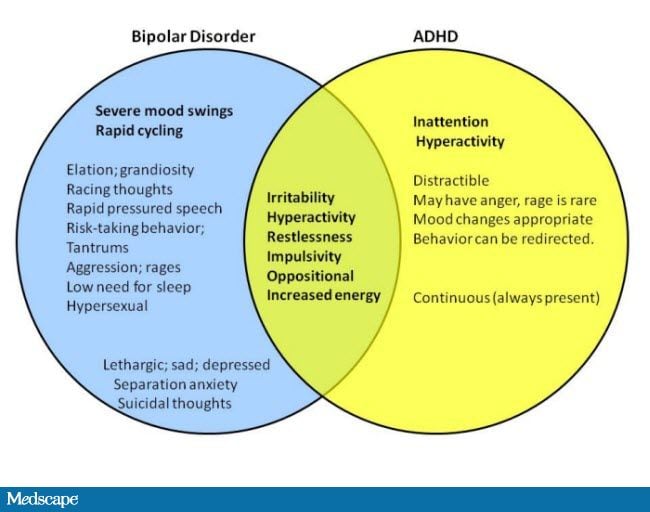
- Bipolar spectrum diagnostic scale (test).
- Young Mania Scale (test).
Video
All about bipolar disorder, or what is really hidden behind the "bipolar"? Part 1
Advanced Bipolar Disorder. Part 2
Test for Bipolar II Disorder (HCL-32) • Psychologist Yaroslav Isaikin
Russian version for detecting hypomanic states. Typically used to detect type II bipolar disorder among patients with a current diagnosis of RDD (recurrent depressive disorder).
In case of exceeding 14 points, "a suspicion of bipolar affective disorder type II" is set, and a psychiatric consultation on this issue is recommended.
Bipolar affective disorder (obsolete MDP - manic-depressive psychosis) is an endogenous mental disorder. A feature of BAD is the sequential alternation of “phases”, some of which are manic, and some are depressive. Phases can have different severity, duration, alternation and frequency of occurrence, which determines the specific clinical picture. Since manic episodes are a much more specific manifestation of bipolar disorder than depressive episodes, the diagnosis of bipolar disorder in the framework of the questionnaire is based on diagnosing a manic phase of a certain severity (the main part) and the presence of a sign of alternating "phases" of mood.
Since manic episodes are a much more specific manifestation of bipolar disorder than depressive episodes, the diagnosis of bipolar disorder in the framework of the questionnaire is based on diagnosing a manic phase of a certain severity (the main part) and the presence of a sign of alternating "phases" of mood.
Other tests for bipolar disorder:
Bipolar Spectrum Diagnostic Scale for Bipolar Spectrum Disorders
Mood Disorder Questionare for Bipolar I Type
Instructions:
Try to remember a period of "high" condition that was not caused by drugs or alcohol and LASTED MORE THAN A COUPLE OF DAYS (4-6 consecutive days)
How did you feel then?
Please answer questions no matter how you feel right now.
1. I needed less sleep
Yes
No
2. I had more energy and was (was) more active
Yes
No
3. I was (was) more confident
Yes
No
4.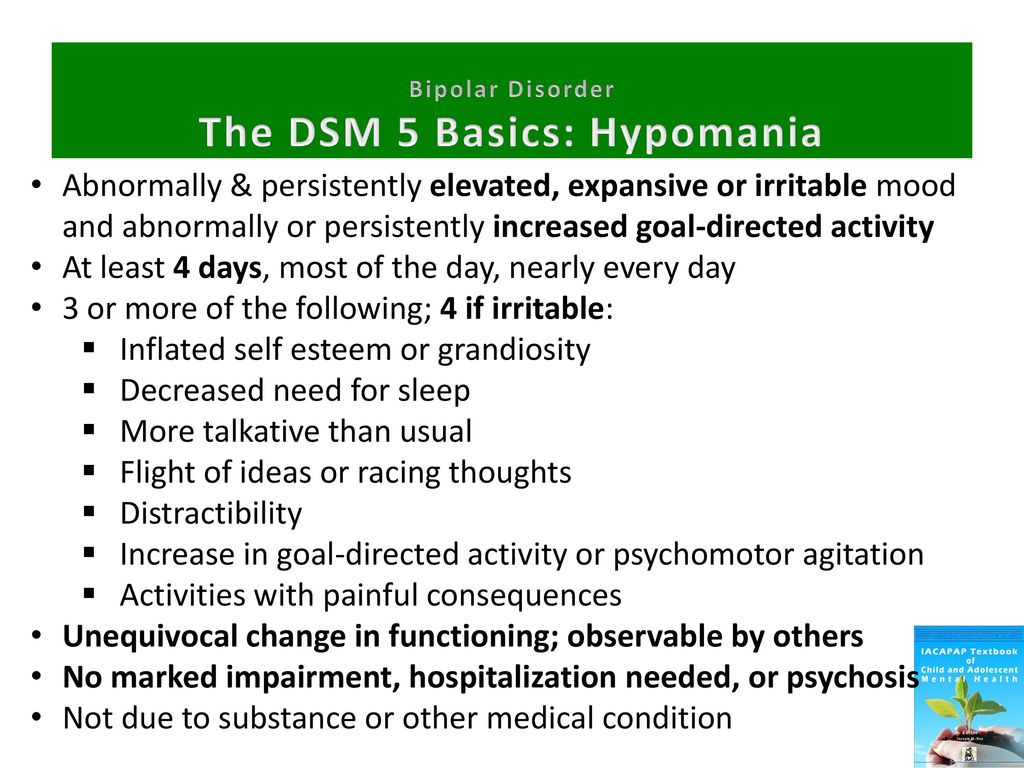 Work gave me more pleasure
Work gave me more pleasure
Yes
No
5. I became more sociable (phoned more often, corresponded with people more often, left the house more)
Yes
No
6. I wanted to travel and actually traveled much more
Yes
No
7. I took risks more often, for example, I began to drive a car at a higher speed
Yes
No
8. I spent more (too much) money
Yes
No
9. In everyday life, I often found myself in risky situations (both at work and in other circumstances)
Yes
No
10. I began to move more (go in for sports, walk, etc.)
Yes
No
11. I had many plans, projects
Yes
No
12. I became more inventive, I had many ideas
Yes
No
13. I became less shy and "notorious"
Yes
No
14. I dressed (dressed) more brightly and extravagantly (I used brighter make-up)
Yes
No
15.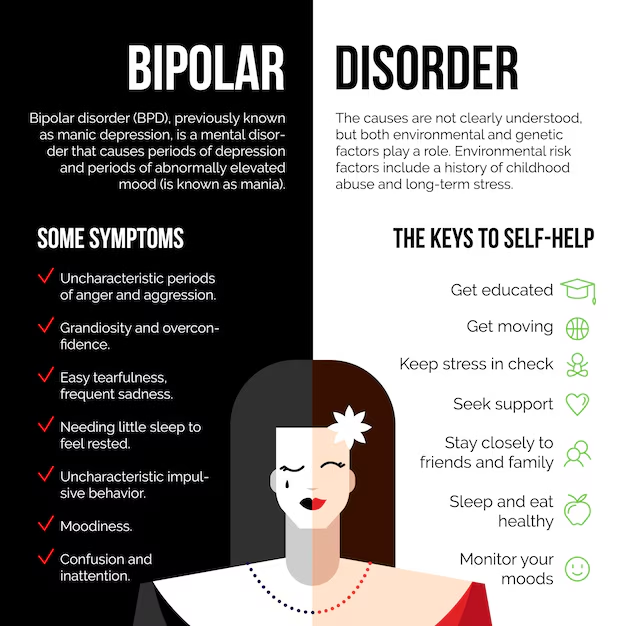 I wanted to meet people more often, and I really communicated with many
I wanted to meet people more often, and I really communicated with many
Yes
No
16. I became more interested in sex than usual, sexual desire increased
Yes
No
17. I flirted more often and/or was more sexually active
Yes
No
18. I talked a lot
Yes
No
19. I was thinking faster than usual
Yes
No
20. I joked and punned a lot
Yes
No
21. I am easily distracted
Yes
No
22. I have a lot of new things to do
Yes
No
23. My thoughts jumped from one to another
Yes
No
24. I did everything much faster and easier than usual
Yes
No
25. I became more impatient and easily irritated
Yes
No
26. I annoyed and tired others
Yes
No
27. I often quarreled
Yes
No
28.
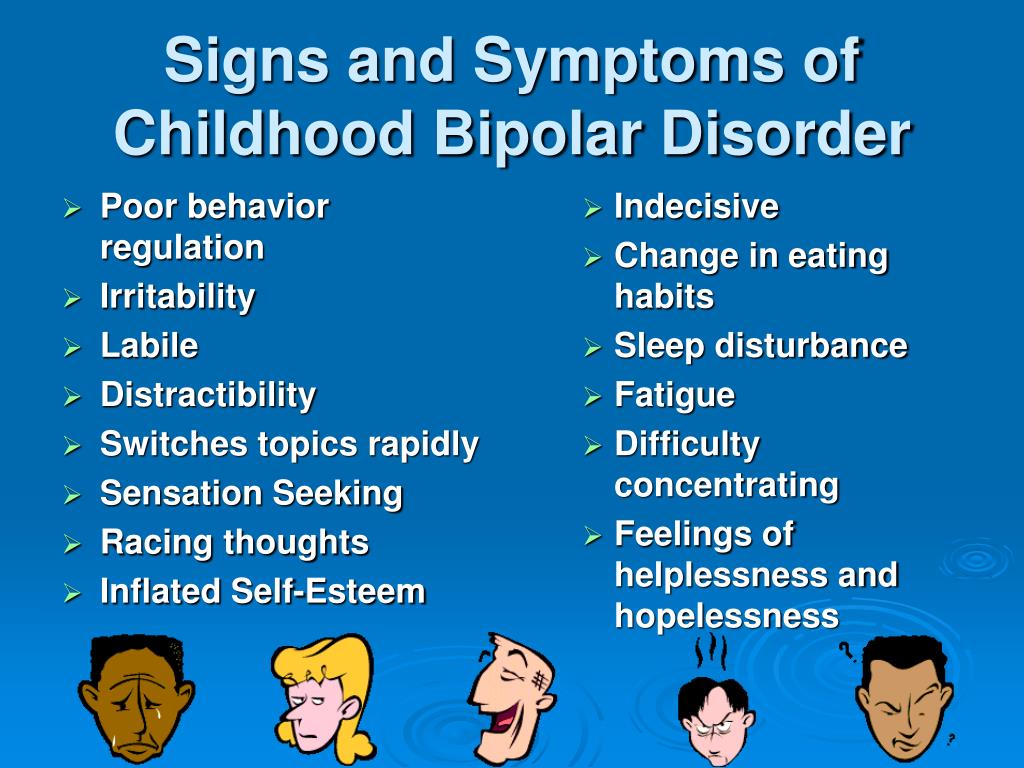 More energetic and active.
More energetic and active.  I have more creative ideas.
I have more creative ideas. 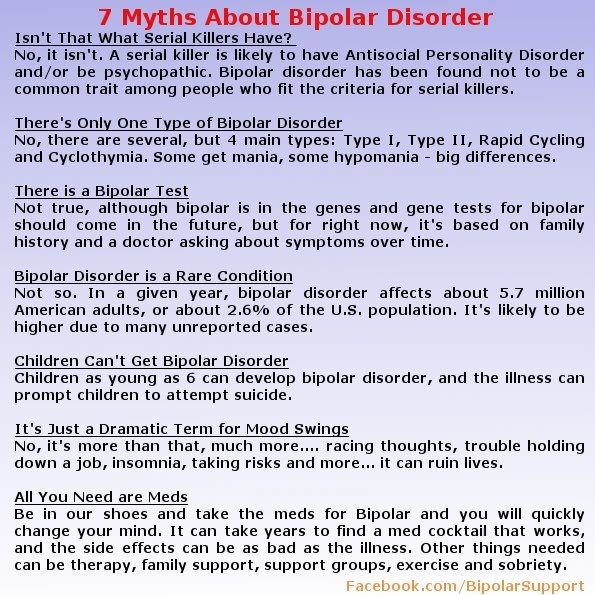 I find many new things to do.
I find many new things to do. 
